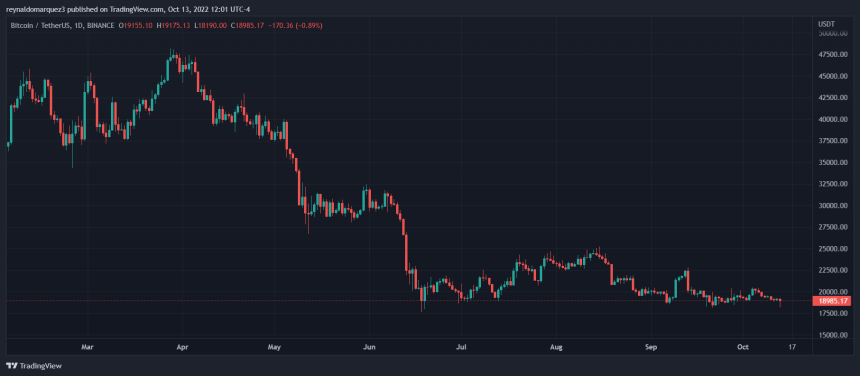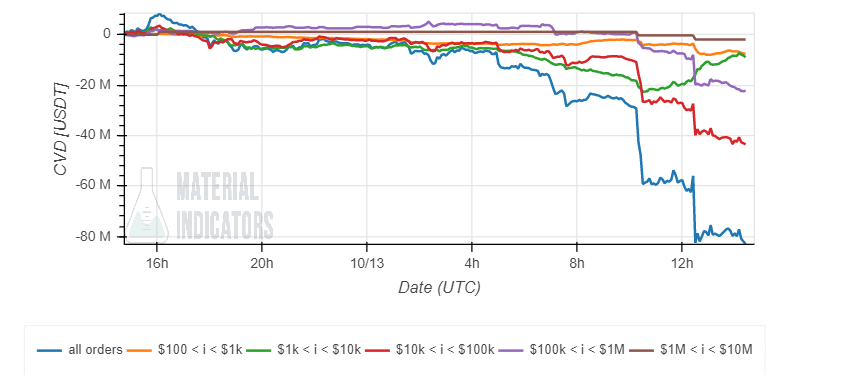Bitcoin lost support at $18,600 and trended lower close to its yearly bottom at $17,900. The cryptocurrency managed to stop the bleeding at these levels, but the general sentiment in the markets seems to have flipped from dubious to fearful.
At the time of writing, Bitcoin was trading at $18,300 with a 4% loss in the last 24 hours and a 9% loss in the past week, but it has been rebounding over the past hour. Other major cryptocurrencies followed BTC’s price into the abyss and are recording massive losses on low timeframes with Cardano and Solana showing the worst performance.
Inflation Yet To Find A Bottom, Will Bitcoin Follow?
Data from Material Indicators show a spike in selling pressure from all investors heading into the Consumer Price Index (CPI), the benchmark for inflation in the United States. This metric rose above market expectations printing an 8.2% for the month of September 2022.
Inflation may not have peaked, yet FED rate hikes will continue aggressively. 75 BPS baked in for Nov, 75 BPS likely for Dec TradFi and Crypto markets are Bearish AF THE BOTTOM isn’t in.Additional data provided by Caleb Franzen indicates that the market expects another two consecutive 75 basis points (bps) hikes in the upcoming Federal Open Market Committee (FOMC). As a result, BTC’s price is experiencing high volatility triggered by extreme market sentiment. Investors seem to be pricing in a hawkish Fed with fewer and fewer chances of a shift in its direction, despite the massive pressure put on global markets. At the time of writing, $17,600 remains as strong support and $20,500 as critical resistance. If Bitcoin breaks above or below these levels, traders should expect a new low or a reclaimed in previously lost territory. This pressure on global markets will continue as long as inflation trends to the upside.
CME futures now pricing in a 95.8% chance that the Federal Reserve raises the target fed funds rate by +0.75%. Zero chance of +50bps, with the market repricing a 4.2% chance of +100bps. Core CPI continues to accelerate, indicating that underlying measures of inflation are hot.— Caleb Franzen (@CalebFranzen)














